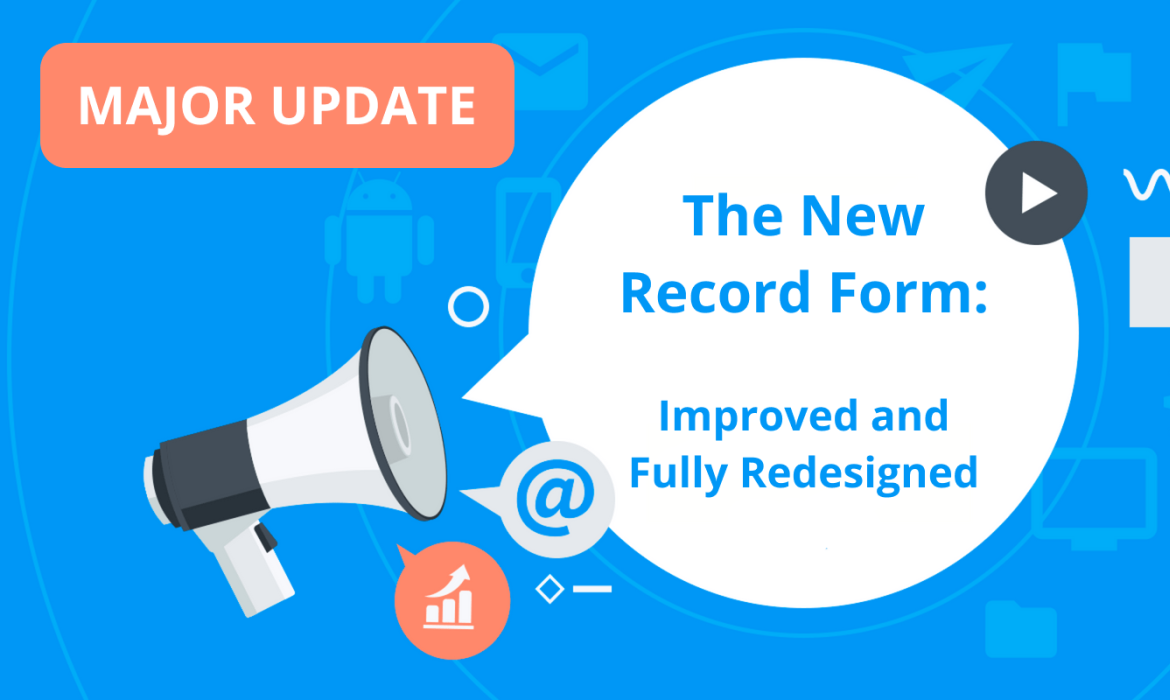Hello everyone!
Material Design 2.0 is the hottest and latest trend introduced by Google not that long ago. You might have seen it’s UI and UX potential in the news Tasks app or, more importantly, the new Gmail. To keep up with this trend, we’ve recently updated NetHunt CRM to be fully compatible with the new Gmail. However, it was only the tip of an iceberg.
Today we’re happy to introduce a remade from the grounds up, completely new record form that will keep your contacts, deals, and project in order. It will do so in style and with some new features.
Let’s take a closer look at what’s news.
A Brand New Look for Records
The biggest change you’ll notice when opening any record in NetHunt is that the records now look completely different. Every element has been fully redesigned to make it not only look more modern but also to improve your experience while working with the system.
The fields in a record are now structured into a compact, yet spacious column, with smooth new animation effects and appearance for most field types. For example, the color-coding has become more subtle, while remaining noticeable.
Also, the record form became slicker and this new look will consistently follow you in other corners of Gmail and G Suite. Need more space for your data? No problem! You can adjust the width of the elements in a record with a simply dragging them.
Conversations Become a Timeline
We strongly believe that data itself is near useless without context. That’s why we’ve remade the old Conversations into a Timeline of your record activities and put it front and center inside the new record. But it’s not the case of a simple renaming.
The new Timeline collects all activity around a record, including comments, Calendar events, call logs and files, combines them with the updates history and attached emails to organize them into an easy-to-read timeline similar to the one you can see in Facebook. This way the context around your deals and relations becomes easier to go through, allowing you to quickly get into the stream of events to always stay up-to-date with whatever is going on around a particular deal.
The timeline feels a bit too crowded? You don’t need ALL of that? Not a problem! Simply click on the filtering icon on top and choose whichever type of data or events you want to see.
Organize Fields Into Groups
Deals are complex. You need a lot of data for each one of them. More data means more fields. More fields mean a long record that you have to scroll down a lot to find the data you need.
Now instead of having one long record, you can split fields into categories for better organization. In case a set of data isn’t useful for you (say, some financial data which is essential for the accounting dept, but not for you), you can simply collapse any group and keep the focus on the data important to you.
To split fields into groups, simply go to the folder Setting, create a new group in the center column of the record builder and drop the fields you need into the appropriate group.
A New Way to Create Records
This change is subtle but very important. Previously, all records were registered in the system as soon as you fill in any field in a record. Sometimes this resulted in unnecessary records being created by mistake.
Now whenever you decide to create a new record, a record creation form will pop up where you can see all of the data that will be filled in automatically (and having an option to change it). This way you can enter all the data you need, make sure that the record looks good, all is correct and only them hit the Create button for the system to register the new record. Or, in case you change your mind, you can discard this record without having to look for it and delete.
On the same note, all Timeline events such as comments and call logs are created in the same fashion, so don’t forget to save them.
Consistent Throughout the G Suite
What’s great about the new looks of a record form is that no matter where you look, no matter which part of Gmail or G Suite you use, the record will look and behave the same. For example, when you open an email which has a record associated with it, the record in the right sidebar will be the same as the one you’ll get when you fully open it. This is true for Gmail, Google Calendar and whichever other services you’ll get NetHunt records integration in the future.
We’ve added the ability to scroll down the attached record separately from the email so that you can always keep the related conversation in sight while working with the record. Additionally, if you have several records associated with the same email, you can switch between records using the new navigation buttons, placing the necessary record into the focus.
More to Come
Updating the record form isn’t just about looks or minor functionality tweaks. We’re planning on greatly expanding the functionality of NetHunt CRM with future updates, making it significantly smarter and letting you interact with the data in more ways than it’s possible at the moment.
So stay tuned for more updates and let us know what you think about the new records look. Hope you like it as much as we!
Table of Contents
Crack the sales formula with CRM Lab
Twice a month, receive actionable CRM content to your inbox.


